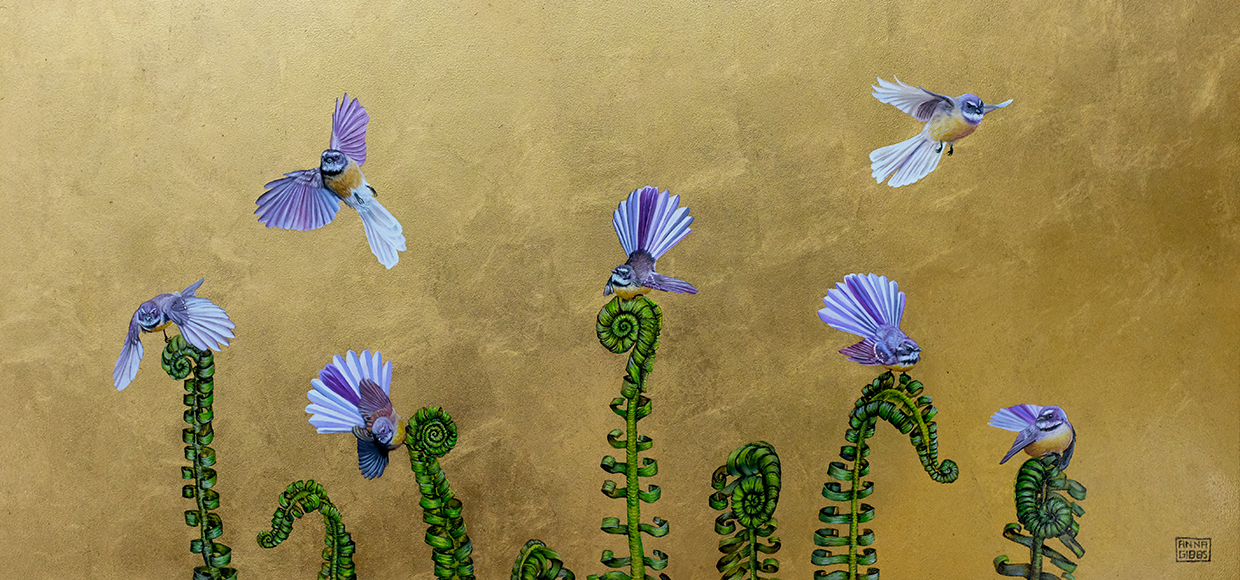How to join the growing movement to save New Zealand’s streams and rivers
.jpg)
The state of New Zealand’s fresh water has bubbled up into a national issue. Politicians, environmental groups and heads of industry have waded into the debate. But behind the headlines a host of Kiwis are putting on their gumboots and getting on with cleaning up the mess.
The damage goes back as far as our agricultural and industrial economies. In New Zealand, many of the hills have been logged over the last 150 years and this has transformed the landscape where our rivers are born. Streams and rivers have been polluted with industrial, agricultural and domestic waste. Their course has been altered and dammed. We stripped the banks of plant life and introduced damaging fish and plants from overseas. And most of the wetlands have been drained.
The intensification of agriculture has accelerated in recent years. This is especially true of the troubled dairy industry on which our economy has relied. Dairy cows have been allowed to enter and erode the river banks. Their effluent has flowed into our streams and rivers. Nitrogen from cow urine leaches through the soil and into the waterways. Phosphorous from fertiliser runs off over the soil and ends up there too. They both act as nutrients, overfeeding the life in the rivers, to their detriment.
New Zealand’s waterways have been damaged by more than a century of agriculture and industrial development, but now concerned indivduals, councils and businesses are addressing the challenges.
One of the most strident critics of the state of New Zealand’s waterways is Dr Mike Joy, a Senior Lecturer in Ecology / Zoology at Massey University’s Institute of Agriculture & Environment. In a recent report, he explains how these processes work. “Rivers respond to nutrients the way your lawn would if you piled on fertiliser,” he says. “They cause abundant plant growth. For rivers, the plants are algae and they bloom. You may have seen it – mats of slimy growth on river beds and soupy green smelly water in slow moving parts of the river. These changes are harmful and eventually lethal for the river ecology. They make it impossible for fish and insects to live, except for a few hardy species who can gulp oxygen off the surface like goldfish in a bowl.” Add to this the silt, sand and topsoil washing off New Zealand’s denuded hillsides and well-trodden pastures and it seems the country’s entire freshwater system is at risk of choking to death.
We won’t fix it by panicking or pointing the finger of blame. One way or another we have all benefited from the developments that caused the damage. Shifting to a totally non-polluting life will not be easy. But in the meantime we have to act. All over the country concerned individuals, families, local groups, councils and businesses are stepping up to the challenge.

The locals
Cleaning Waikakahi Stream with community spirit
People living around Glenavy in Canterbury have spent more than 20 years restoring Waikakahi Stream from a muddy bog back into a pristine waterway.
The process was kicked off by local farmer Chris Paul. Working with Environment Canterbury he brought together local landowners, schools and government bodies to take water quality samples and carry out fish and bird counts. They followed that up with silt traps, replanting of stream banks and fencing out stock. The water is now crystal clear once more. Trout, eels and bullies are all returning.
Kate White is a member of the local committee set up by Environment Canterbury Regional Council to help protect the region’s waterways. “In the beginning there was no fencing, areas of bog, no defined stream edge and stock were grazing in the stream,” she says. “That’s all changed. Everyone worked together and decided what needed to be done from the first meeting. At the next meeting held six months later one farmer hadn’t done his fencing so he turned around and did it overnight.”
See something? Say something! Call your local councils pollution hotline and let them know.
Friends of Oakley Creek Te Auaunga
Wendy John moved into Auckland’s Mount Albert area in 2003. At the time, plans were afoot to put a new highway straight through the catchment for the Oakley Creek waterway. Wendy wanted to help stop the plan, but was keen to leave the protesting to others and take a different approach.
“Everything had been cut down and people were using the place as a rubbish dump,” she says. “I knew that you can only really protect something in the long-term if you give the local community some sense of ownership, and give a place some real value for them.”

Working through friends, local connections and Auckland Council Wendy was able to get a proper assessment done and a management plan in place.
The group now helps with weed and pest control as well as monitoring of water quality, plant and animal life. It also co-ordinates visits and working bees with local groups and schools. Together with contractors they have planted more than 65,000 native plants along the creek since 2005.
“I love what I do,” says Wendy. “It is really satisfying multi-faceted work. And it’s a beautiful place to go.”
How you can help them
·
Sign up to get information from your local river care group
·
Donate money, tools or other supplies
·
Take the family and join a working bee for a day
·
Help promote what they do in your community. Talk to friends who might be keen.

The businesses
The Million Metres Streams Project
The Sustainable Business Network now has more than 500 members, including many major businesses like Westpac, Kiwibank, BNZ, NZ Post and Z Energy.
Last year the network teamed up with creative collective Enspiral and the Department of Conservation for the Million Metres Streams Project, which crowdfunds the replanting of river and stream banks with native trees and plants. The aim is to collectively replant 1,000 kilometres of waterway.
Each project is community-based and completed with an expert partner to ensure the work is done properly to get the best results.
Project Manager Georgina Hart says: “Replanting rivers and streams is a really effective way to help restore our waterways. These projects are a great way to bring people together to help. It can be a lot of fun and it’s really rewarding to see how quickly you can transform and restore native ecosystems in your local area.”
How you can help them
·
Go to millionmetres.org.nz and sponsor some stream bank replanting
·
Find your local stream or riverbank planting project and enquire about getting it listed with Million Metres for crowdfunding
·
Find out how your business could join the Sustainable Business Network and sponsor projects like these at sustainable.org.nz

The farmers
Taupo Beef – the future of farming?
Farmers have taken a battering on this issue and some of that might be justified. But we need farmers. And not all of them are created equal, especially in their approach to the environment.
Mike Barton and his wife Sharon of Taupo Beef are leading the herd. They farm 146 hectares in western Taupo. Waikato Regional Council has imposed cattle limits to protect the lake, which is currently one of the cleanest in the world. This has closed nearly a third of the farms close to the lake.
Rather than give up, the Bartons produce a premium brand of beef with reduced stock that is consented and certified by the Council. More than a fifth of the 146 hectare farm is either set aside for conservation, or is river bank that has been replanted with native trees and plants. The farm is also heavily monitored and has trialled new waste control methods.

The Council believes a reduced number of lower intensity farms like the Bartons will help protect the lake for the next 150 years. It might be what saves other areas too.
In the meantime, Taupo Beef is proving very popular, proving that it can be done.
“How many of us actively purchase food that has been grown in a way that protects water quality?” asks Mike Barton. “Do you even ask for that when you go to the supermarket? The reality is as a nation we need every consumer to do that.”
How you can help them
·
Support Taupo Beef, which is available at Moore Wilsons, Farro and selected restaurants in Taupo and elsewhere
·
Find out where the meat you buy is coming from and what efforts are made to reduce its impact. You can do the same for dairy too
·
If you find yourself eating more than 500 grams of red meat a week, consider cutting down. This will be better for your health and the environment. This also means that when you do buy beef you may have more budget available to buy premium and certified options.
g





